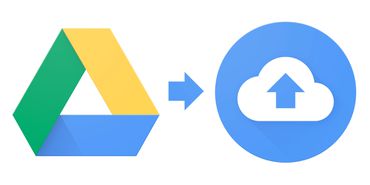Google Drive and why you need to start using it.

Google Drive is a file storage and synchronization service developed by Google. Google Drive allows users to store files in the cloud, synchronize files across devices, and share files.
Google Drive is include with all Google accounts and users get an automatic, free 15 gigabytes of free storage. Through paid plans storage can be increased to 100 gigabytes or to as much as 30 terabytes. Drive allows the user to upload files and set the privacy settings for individual files or folders.
Tired of never ending website updates?
Pod Creative offers dedicated, managed hosting for $30/month. That means you never have to worry about the next update.
Google Drive is a key component of G Suite, Google’s monthly subscription offering for businesses and organizations. As part of select G Suite plans, Drive offers unlimited storage, advanced file audit reporting, enhanced administration controls, and greater collaboration tools for teams.
Google Drive is changing—here’s how to prepare
File storage service Google Drive is ending support for its desktop apps in March. But what exactly is changing, what will happen to your data, and most important, what do you need to do to get ready? We’ll answer all those questions and more. Here’s a rundown of Google’s plans for its cloud-storage service, and how you should prepare for them.
What won’t change
Don’t be alarmed if you see headlines about Google killing off or deprecating Drive—it’s one of the tech giant’s core products, and it isn’t going anywhere. That means the main Google Drive service and office suite, where you store files and work on documents, will remain in place. On the whole, you can carry on using Google Drive as usual, creating documents, spreadsheets, and presentations, streaming videos from the web, and uploading files from your computer via your web browser.
You will still be able to open your web browser and access your data through the Drive website. Similarly, the mobile apps for Android and iOS will look just the same. If you rely on apps that plug into Google Drive or use it for cloud storage, then these should carry on working fine too. Even your storage plan, if you’ve paid for one, will stay in place.
What will change
Google’s Drive changes are limited to its clients for Windows and macOS, apps that are also called Google Drive. If you’ve never heard of these, don’t fret—they’re not essential to the Google Drive experience. They simply make it easier to sync files to and from Google Drive on a desktop or laptop, much like Dropbox.
So if you primarily employ Google Drive to write essays in your browser, then you don’t really need these desktop clients. But if you rely on Drive to back up all your music, movies, and other files, then the applications make uploading and downloading files much more straightforward. Google knows this, which is why the company isn’t just eliminating these apps—it’s upgrading them. And home and business users each get their own replacements.
Home users can replace their Drive clients for Windows and macOS with a new tool called Backup & Sync, which Google announced back in July. It doesn’t differ too much from the old applications, but it does provide more comprehensive backup for your whole computer.